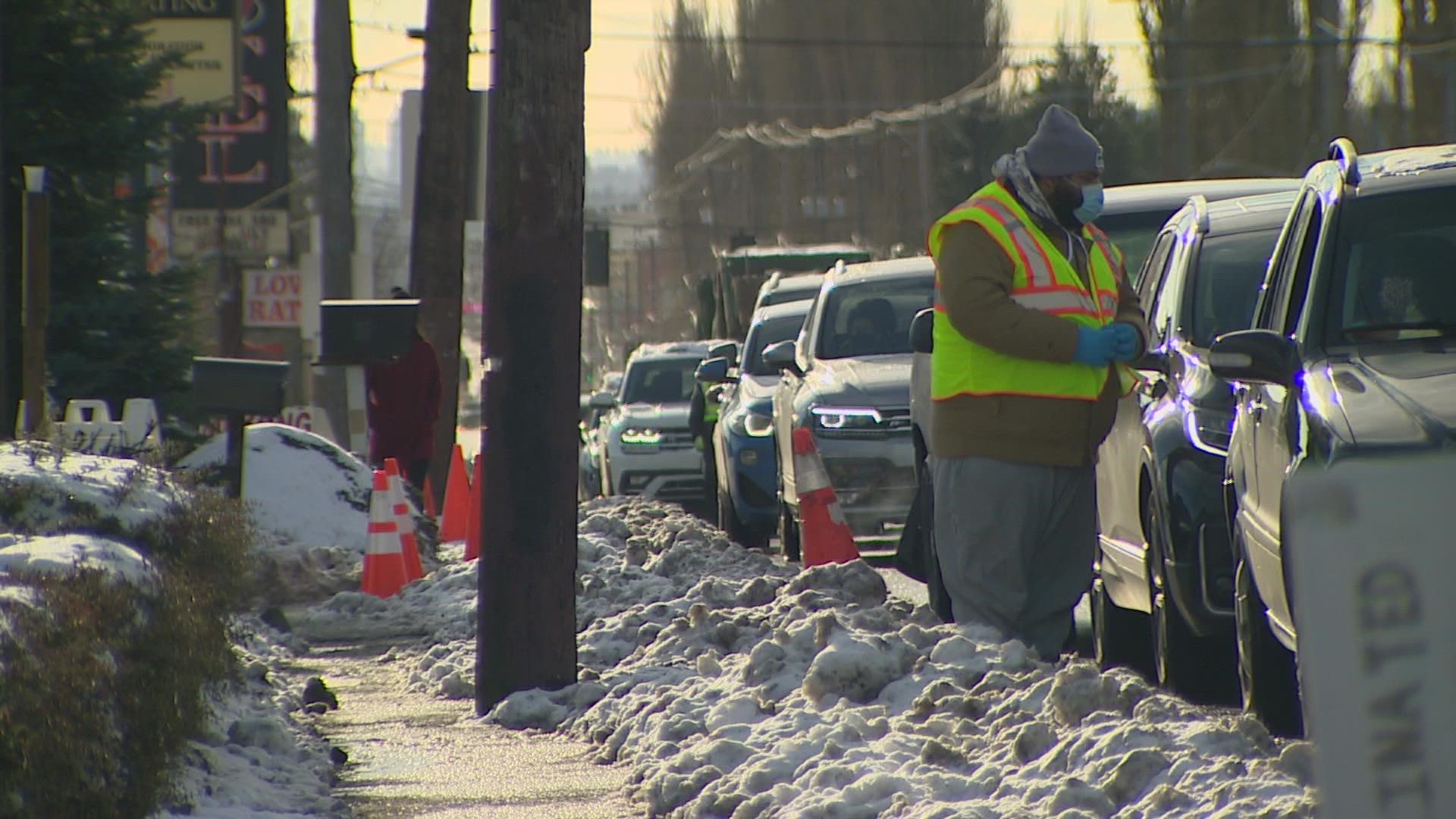SEATTLE — The Washington State Department of Health (DOH) released a reminder Thursday on what Washingtonians should do if they test positive for COVID-19.
The release comes amid a sharp increase in cases due to the omicron variant. The state saw a record daily number of cases on Christmas Eve with more than 6,200 people testing positive for the virus.
Experts fear hospitalizations will soon follow the trend with an already strained health care system that is overflowing in some areas. Already, the state saw daily hospitalizations increase by more than 200 patients in the last week. Statewide COVID-19 hospital occupancy went from 610 on Dec. 20 to 832 on Dec. 28.
With numbers expected to only keep rising, the DOH says that testing is still important to continue tracking cases and preventing any further spread of the virus.
“As cases continue to rise, people may need a reminder of what to do if they test positive,” said DOH Chief Science Officer Dr. Tao Sheng Kwan-Gett. “We hope this is a helpful guide and reminds people of all the tools we have in our toolbox to protect ourselves, as individuals, our families, and our communities.”
Here are some reminders on what to do if you test positive:
- Isolate in your home immediately after testing positive. All close contacts should also quarantine and get tested. The latest guidance from the Centers for Disease Control and Prevention (CDC) says that asymptomatic patients should isolate for at least five days.
- Wear a mask while inside and ask others in your home to do the same. KN95, KF-94 or three-ply surgical masks are preferred. If a mask is ill-fitting, knot ear loops to tighten the mask or double mask to close any gaps.
- Ventilate your space as much as possible by setting your heating system to on or high. If you have an HVAC, be sure it has a fresh filter. Also, open windows briefly, if possible.
- Use WA Notify to report your positive at-home test.
- Reach out to close contacts and let them know they’ve been exposed. Advise them that they should quarantine.
- Stay hydrated and use over-the-counter medicine like acetaminophen to manage symptoms like fever and stay comfortable.
- Seek medical care if you have trouble breathing, persistent chest pain or pressure, confusion or trouble waking up or staying awake, experience paleness or blue-colored skin, lips or nail beds.
While some experts are skeptical about the CDC's recent changes in isolation guidance, changing the number of days from 10 to five, the DOH has adopted the guidance for Washington state.
The change was made in response to the growing evidence that asymptomatic individuals with COVID-19 mostly spread the disease in the first few days of infection.
DOH Deputy Secretary for COVID Response Lacy Fehrenbach said Thursday, "This transition for shortened isolation and quarantine is grounded in science and also helps society keep running, and that is also important in a pandemic."
Those looking to get tested can use the DOH testing locator to find a location nearby.

